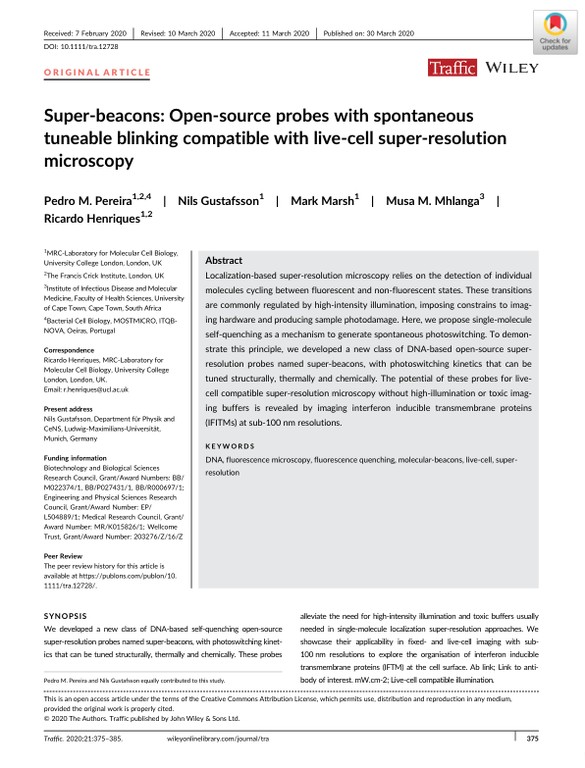Super‐beacons - Open‐source probes with spontaneous tuneable blinking compatible with live‐cell super‐resolution microscopy
Technologies: NanoJ (), NanoJ-Fluidics (), NanoJ-SQUIRREL (), NanoJ-SRRF () and Super-Beacons
Paper published in Traffic, January 2020
Publisher: John Wiley & Sons A/S Former Munksgaard

The manuscript "Super-beacons: Open-source probes with spontaneous tuneable blinking compatible with live-cell super-resolution microscopy," published in Traffic in March 2020, introduces a new class of DNA-based self-quenching super-resolution probes named super-beacons. Developed by Pedro M. Pereira, Ricardo Henriques, Nils Gustafsson, Mark Marsh, and Musa M. Mhlanga, these probes exhibit spontaneous photoswitching, enabling live-cell compatible super-resolution microscopy without the need for high-intensity illumination or toxic imaging buffers. The study demonstrates the applicability of super-beacons in imaging interferon inducible transmembrane proteins (IFITMs) at sub-100 nm resolutions. The researchers used biotinylated single-stranded DNA sequences for probe synthesis and characterized the probes using ThunderSTORM analysis and the DBSCAN clustering algorithm. The super-beacons achieved high-quality super-resolution images with a low density of localizations and a mean precision of 22.0 nm. The study was funded by various grants and acknowledges the contributions of several individuals and research groups. The manuscript also describes the use of a NanoJ-Fluidics system for probe synthesis and functionalization, resulting in high photostability and tunable blinking properties. The study's findings contribute to the advancement of super-resolution microscopy, offering a cost-effective and versatile solution for researchers in various fields.